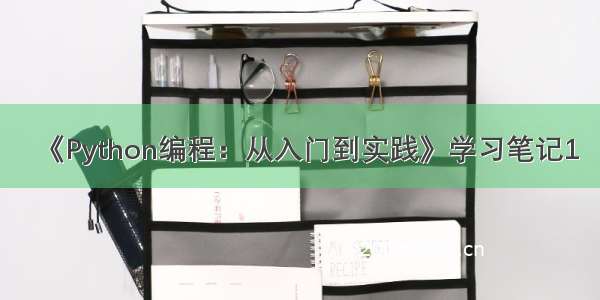
Python中的函数就是带名字的代码块,主要用于完成具体的工作。Python的函数用def关键字来声明,定义好函数名后,后面的所金行都属于函数的函数体,如下所示:
def test(t1): #def声明构建函数,函数名为test,其中t1是用来传递参数的形参print(t1) #此处是函数的函数体test('t2')#调用函数test(),函数内部的t2是被传递的值,即实参#执行结果如下:t2
在Python的函数中,形参是函数完成其工作所需的一项信息,实参是调用函数式传递给函数的信息。通俗来说,形参用来接收调用方法时传递过去的实参,在接受到实参中的值以后,将其带入函数体中进行处理;而实参则是调用函数时被传递的值。向函数传递 实参的方法有很多,常见的方法有三个,即位置实参、关键字实参和默认值三种,如下所示:
##位置实参,实参的顺序要和形参的顺序一致def describe_pet(animmal_type,pet_name):"""显示宠物的信息"""print("\nI have a " + animmal_type + ".")print("My " + animmal_type + "'s name is " + pet_name.title() + ".")describe_pet('hamste','harry')#执行结果如下所示:I have a hamste.My hamste's name is Harry.#关键字实参,在调用时指定形参对应的实参,即键值对,#由于调用实参时指定了值,因此实参顺序可以不考虑def describe_pet(animmal_type,pet_name):"""显示宠物的信息"""print("\nI have a " + animmal_type + ".")print("My " + animmal_type + "'s name is " + pet_name.title() + ".")describe_pet(animmal_type = 'hamste',pet_name = 'harry')#执行结果如下所示:I have a hamste.My hamste's name is Harry.#默认值,在定义形参的时候,将部分或全部形参附上默认值,#当调用实参时,可以不引用赋有默认值的形参,这样输出结果就是默认值,#如果跟默认值不符,也可以在调用实参的时候给实参赋值def describe_pet(animmal_type,pet_name = 'ben'):"""显示宠物的信息"""print("\nI have a " + animmal_type + ".")print("My " + animmal_type + "'s name is " + pet_name.title() + ".")describe_pet(animmal_type = 'hamste',pet_name = 'harry')#执行结果如下所示:I have a hamste.My hamste's name is Harry.
调用函数的方式多种多样,在适合的环境下使用正确的方法,需要大量的练习和开发过程中的经验积累,当然容易理解很重要,课后习题答案如下所示:
--8-4def make_shirt(size,printing = '英文'):print("这件衣服的尺码是" + size + ",上面印着" + printing + ".")make_shirt('xl','汉字')#输出结果如下所示:这件衣服的尺码是xl,上面印着汉字.
对于函数的复杂应用,不得不提到返回值!函数处理返回的值被称为返回值,用return来声明,返回值的使用能够将程序大部分繁中的工作转移到函数中去,从而简化程序,如下所示:
#让实参变得可选def get_formatted_name(first_name,last_name,middle_name = ''):"""返回整洁的姓名"""full_name = first_name + ' ' + middle_name + ' ' + last_namereturn full_name.title()musician = get_formatted_name('john','lee','hooker')print(musician)musician = get_formatted_name('jimi','hendrix')print(musician)#输出结果如下所示:John Hooker LeeJimi Hendrix
上例中定义函数get_formatted_name(),包含三个形参first_name、last_name和middle_name,其中形参middle_name因为赋默认值,因此放最后,然后执行函数体,将执行结果赋值给变量full_name,并在执行完毕后将执行结果full_name作为返回值,返回给调用get_formatted_name()函数的变量musician,然后打印变量musician,实现整个函数。
除了上例中返回的结果外,返回值还能返回字典,如下例所示:
#形参age,赋默认值为空#当实参未调用age时,默认赋值为空#当实参调用age时,进入if判断,age为字典person的键#因此person['age'] 的值为形参age,调用的时候,数值传入形参age中def build_person(first_name,last_name,age = ''):"""返回一个字典,其中包含有关一个人的信息"""person= {'first':first_name,'last':last_name}if age:person['age'] = agereturn personmusician = build_person('jimi','hendrix',age = '16')print(musician)#输出结果如下所示:{'first': 'jimi', 'last': 'hendrix', 'age': '16'}
上例中定义函数build_person,包含三个形参first_name,last_name和age,其中形参age赋默认值为空,定义字典person用于存储实参数值,由于age有默认值空,因此进入if判断,当age有值时加入字典person,处理完毕后返回结果person,并将返回的结果存入调用方法build_person的变量musician,打印变量musician可获得结果。
函数体的逻辑可以简单也可以复杂,比如加上while循环的使用,可以让功能更加强大,如下所示:
#函数统一了输出的格式,while循环实现了函数的实参值处理def get_formatted_name(first_name,last_name):"""返回整洁的姓名"""full_name = first_name + ' ' + last_namereturn full_name.title()while True:print("\nPlease tell me you name:")print("(enter 'q' at any time to quit)")f_name = input("First_name:")if f_name == 'q':breakl_name = input("Last_name:")if l_name == 'q':breakformatted_name = get_formatted_name(f_name,l_name)print("\nHello," + formatted_name + "!")#输出结果如下所示:Please tell me you name:(enter 'q' at any time to quit)First_name:aLast_name:bHello,A B!Please tell me you name:(enter 'q' at any time to quit)First_name:q进程完成,退出码 0
上例中处理方函数内while循环问题,并不复杂,下面是课后习题答案,如下所示:
#8-6def city_country(city,country):cc = city + "," + countryreturn cc.title()regime = city_country('santuago','chile')print((regime))#输出结果如下所示:Santuago,Chile#8-7def make_album(singer,album,number = ''):works = {'singer':singer,'album':album}if number:works['number'] = numberreturn worksresult = make_album('周杰伦','Jay',10)print(result)#输出结果如下所示:{'singer': '周杰伦', 'album': 'Jay', 'number': 10}#8-8def make_album(singer,album):works = singer + ',' + albumreturn works.title()while True:print("请输入你喜欢的歌手信息")singer_name = input("singer:")if singer_name == 'q':breakalbum_name = input("album:")if album_name == 'q':breakresult = make_album(singer_name,album_name)print(result)#输出结果如下所示:请输入你喜欢的歌手信息singer:周杰伦album:Jay周杰伦,Jay请输入你喜欢的歌手信息singer:q进程完成,退出码 0#8-8变形,增加number形参处理专辑内歌曲数量问题def make_album(singer,album,number = ''):works = {'singer':singer,'album':album}if number:works['number'] = numberoutput_works = works['singer'] + "," + works['album'] + "," + works['number']else:output_works = works['singer'] + "," + works['album']return output_workswhile True:print("请输入你喜欢的歌手信息")singer_name = input("singer:")if singer_name == 'q':breakalbum_name = input("album:")if album_name == 'q':breaknumbers = input("number:")if numbers == 'q':breakresult = make_album(singer_name,album_name,numbers)print(result)#输出结果如下所示:请输入你喜欢的歌手信息singer:周杰伦album:Jaynumber:10周杰伦,Jay,10请输入你喜欢的歌手信息singer:周杰伦album:Jaynumber:周杰伦,Jay请输入你喜欢的歌手信息
复杂的内容有时会通过列表传递到函数中进行处理,如下所示:
#以列表的形式向函数传参,通常结构如下def greet_users(names):"""向列表中的每位用户发出简单的问候"""for name in names:msg = "Hwllo," + name.title() + "!"print(msg)username = ['hannah','ty','margot']greet_users(username)#输出结果如下所示:Hwllo,Hannah!Hwllo,Ty!Hwllo,Margot!#复杂的传参如下所示、#定义函数print_models,包含形参unprinted_designs和completed_modelsdef print_models(unprinted_designs,completed_models):"""模型打印每个设计,直到没有未打印的设计为止打印每个设计后,都将其移到列表completed_models中"""#执行while循环,将列表unprinted_designs中的数据传递到current_desgion中while unprinted_designs:current_desgion = unprinted_designs.pop()#模拟根据设计制作3D打印模型的过程,即打印列表传递的过程print("Prining model: " + current_desgion)completed_models.append(current_desgion)def show_completed_models(completed_model):"""显示打印好的模型"""print("\nThe following modles have been printed:")for completed_model in completed_model:print(completed_model)#创建列表unprinted_designs和completed_modelsunprinted_designs = ['iphone case','robot pendant','dodecahedron']completed_models = []#定义变量print_models和show_completed_models负责传参print_models(unprinted_designs,completed_models)show_completed_models(completed_models)#输出结果如下所示:Prining model: dodecahedronPrining model: robot pendantPrining model: iphone caseThe following modles have been printed:dodecahedronrobot pendantiphone case
课后习题答案如下所示:
#8-9def show_magicians(names):for name in names:print(name)names = ['a','b','c']show_magicians(names)#输出结果如下所示:abc#8-10def make_great(unnames,names):while unnames:sname = unnames.pop()names.append(sname)def show_magicians(names):for name in names:print(name.title() + " the Great")unnames = ['a','b','c']names = []make_great(unnames,names)show_magicians(names)#输出结果如下所示:C the GreatB the GreatA the Great#8-11def make_great(unnames,names):while unnames:sname = unnames.pop()names.append(sname.title() + " the Great")def show_magicians(names):for name in names:print(name)unnames = ['a','b','c']names = []make_great(unnames[:],names) #unnames[:]的作用在于传参时传递的是列表unnames的复制列表,不会修改原数据show_magicians(names)print(unnames)print(names)#输出结果如下所示:#8-9def show_magicians(names):for name in names:print(name)names = ['a','b','c']show_magicians(names)#输出结果如下所示:abc#8-10def make_great(unnames,names):while unnames:sname = unnames.pop()names.append(sname)def show_magicians(names):for name in names:print(name.title() + " the Great")unnames = ['a','b','c']names = []make_great(unnames,names)show_magicians(names)#输出结果如下所示:C the GreatB the GreatA the Great#8-11def make_great(unnames,names):while unnames:sname = unnames.pop()names.append(sname.title() + " the Great")def show_magicians(names):for name in names:print(name)unnames = ['a','b','c']names = []make_great(unnames[:],names) #unnames[:]的作用在于传参时传递的是列表unnames的复制列表,不会修改原数据show_magicians(names)print(unnames)print(names)#输出结果如下所示:C the GreatB the GreatA the Great['a', 'b', 'c']['C the Great', 'B the Great', 'A the Great']
处理日常问题时,有时因为数据量庞大,可能不知道你有多少个参数传递进来,因此Python有关于传递任意实参的处理方式,如下所示:
def make_pizz(*toppings): #在形参前面添加*,表示创建名为toppings的元组,将所有值都封装进去"""打印顾客点的所有配料"""print("\nMaking a pizz with the following topping:")for topping in toppings:print("- " + topping)make_pizz('pepperoni')make_pizz('mushrooms', 'green peppers', 'extra cheese')#输出结果如下所示:Making a pizz with the following topping:- pepperoniMaking a pizz with the following topping:- mushrooms- green peppers- extra cheese#存在知道部分实参数量的情况,此时可用以下方式处理,知道实参的数据正常处理,不知道的用*批量处理def make_pizz(size,*toppings):"""概述要制作的披萨"""print("\nMaking a " + str(size)+"-inch pizz with the following toppings:")for topping in toppings:print("- " + topping)make_pizz(16,'pepperoni')make_pizz(34,'mushrooms', 'green peppers', 'extra cheese')make_pizz(22)#输出结果如下所示:Making a 16-inch pizz with the following toppings:- pepperoniMaking a 34-inch pizz with the following toppings:- mushrooms- green peppers- extra cheeseMaking a 22-inch pizz with the following toppings:#有时需要接收任意实参,但不知道实参是什么样的信息,此时可将函数编写成能够接受任意数量的键值对,将数据存放在字典中def build_profile(first,last,**user_info): ##形参前面加两个**,表示创建名为user_info的字典"""创建一个字典,其中包含我们知道的有关用户的一切"""profile = {}profile["first_name"] = firstprofile['last_name'] = last#该出循环为=是为了任意实参取数,将实参传入入的键值对取出键和值,以profile[key] = value的形式存入字典profile中for key,value in user_info.items(): profile[key] = valuereturn profileuser_profile = build_profile('albert','einstein',location = 'princeton',field = 'physics')print(user_profile)#输出结果如下所示:{'first_name': 'albert', 'last_name': 'einstein', 'location': 'princeton', 'field': 'physics'}
习题答案如下:
#8-12def sandwich_toppings(*toppings):print(toppings)sandwich_toppings('mushroom','tomato','green peppers')#输出结果如下所示:('mushroom', 'tomato', 'green peppers')#8-14def make_car(manufacturer,model,**other_information ):car_information = {}car_information['manufacturer_name'] = manufacturercar_information["model_value"] = modelfor key,value in other_information.items():car_information[key] = valuereturn car_informationcar = make_car('subaru','outback',color = 'blue',tow_package = True)print(car)#输出结果如下所示:'manufacturer_name': 'subaru', 'model_value': 'outback', 'color': 'blue', 'tow_package': True}
函数的优点之一是可以将代码块和主程序分离,将函数存储在称为模块的独立文件中,通过import导入的方式进入主程序,如下所示:
#test.pydef make_pizz(size,*toppings):"""概述要制作的披萨"""print("\nMaking a " + str(size) +"-invh pizz with the following toppings:")for topping in toppings:print("- " + topping)################################导入整个模块#test2.pyimport test1test1.make_pizz(16,'pepperoni')test1.make_pizz(12,'mushroom','green peppers','extra cheese')print("-----------------导入整个模块-----------------")################################导入模块中的特定函数,多个函数可用逗号隔开from test1 import make_pizzmake_pizz(16,'pepperoni')make_pizz(12,'mushroom','green peppers','extra cheese')print("-----------------导入模块中的特定函数-----------------")################################给导入模块中的特定函数起别名from test1 import make_pizz as mpmp(16,'pepperoni')mp(12,'mushroom','green peppers','extra cheese')print("-----------------给导入模块中的特定函数起别名-----------------")################################给导入模块起别名import test1 as pp.make_pizz(16,'pepperoni')p.make_pizz(12,'mushroom','green peppers','extra cheese')print("-----------------给导入模块起别名-----------------")################################导入模块中的所有函数from test1 import *make_pizz(16,'pepperoni')make_pizz(12,'mushroom','green peppers','extra cheese')print("-----------------导入模块中的所有函数-----------------")#输出结果如下所示:Making a 16-invh pizz with the following toppings:- pepperoniMaking a 12-invh pizz with the following toppings:- mushroom- green peppers- extra cheese-----------------导入整个模块-----------------Making a 16-invh pizz with the following toppings:- pepperoniMaking a 12-invh pizz with the following toppings:- mushroom- green peppers- extra cheese-----------------导入模块中的特定函数-----------------Making a 16-invh pizz with the following toppings:- pepperoniMaking a 12-invh pizz with the following toppings:- mushroom- green peppers- extra cheese-----------------给导入模块中的特定函数起别名-----------------Making a 16-invh pizz with the following toppings:- pepperoniMaking a 12-invh pizz with the following toppings:- mushroom- green peppers- extra cheese-----------------给导入模块起别名-----------------Making a 16-invh pizz with the following toppings:- pepperoniMaking a 12-invh pizz with the following toppings:- mushroom- green peppers- extra cheese-----------------导入模块中的所有函数-----------------Making a 16-invh pizz with the following toppings:- pepperoniMaking a 12-invh pizz with the following toppings:- mushroom- green peppers- extra cheese-----------------导入整个模块-----------------Making a 16-invh pizz with the following toppings:- pepperoniMaking a 12-invh pizz with the following toppings:- mushroom- green peppers- extra cheese-----------------导入模块中的特定函数-----------------Making a 16-invh pizz with the following toppings:- pepperoniMaking a 12-invh pizz with the following toppings:- mushroom- green peppers- extra cheese-----------------给导入模块中的特定函数起别名-----------------Making a 16-invh pizz with the following toppings:- pepperoniMaking a 12-invh pizz with the following toppings:- mushroom- green peppers- extra cheese-----------------给导入模块起别名-----------------Making a 16-invh pizz with the following toppings:- pepperoniMaking a 12-invh pizz with the following toppings:- mushroom- green peppers- extra cheese-----------------导入模块中的所有函数-----------------#课后习题如下所示#8-15#test1def print_models(unprinted_designs,completed_models):"""模型打印每个设计,直到没有未打印的设计为止打印每个设计后,都将其移到列表completed_models中"""while unprinted_designs:current_desgion = unprinted_designs.pop()#模拟根据设计制作3D打印模型的过程print("Prining model: " + current_desgion)completed_models.append(current_desgion)def show_completed_models(completed_model):"""显示打印好的模型"""print("\nThe following modles have been printed:")for completed_model in completed_model:print(completed_model)################################test2from test1 import *unprinted_designs = ['iphone case','robot pendant','dodecahedron']completed_models = []print_models(unprinted_designs,completed_models)show_completed_models(completed_models)#输出结果如下所示:Prining model: dodecahedronPrining model: robot pendantPrining model: iphone caseThe following modles have been printed:dodecahedronrobot pendantiphone casePrining model: dodecahedronPrining model: robot pendantPrining model: iphone caseThe following modles have been printed:dodecahedronrobot pendantiphone case














![[童话作文200字]我的弟弟作文200字 3篇](https://200zi.50zi.cn/uploadfile/img/2024/08/08/69a4995006007eedbeafd839b1287172.jpg)

